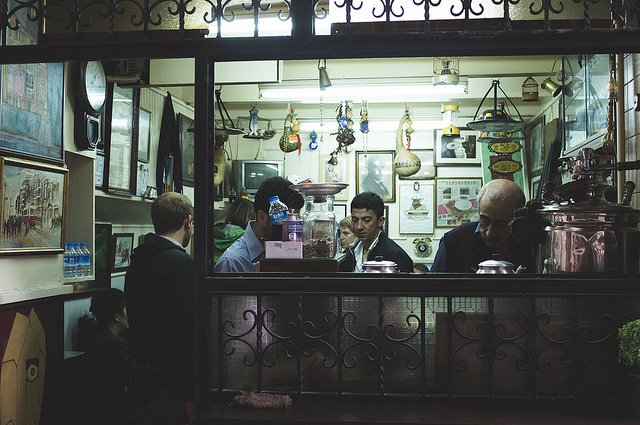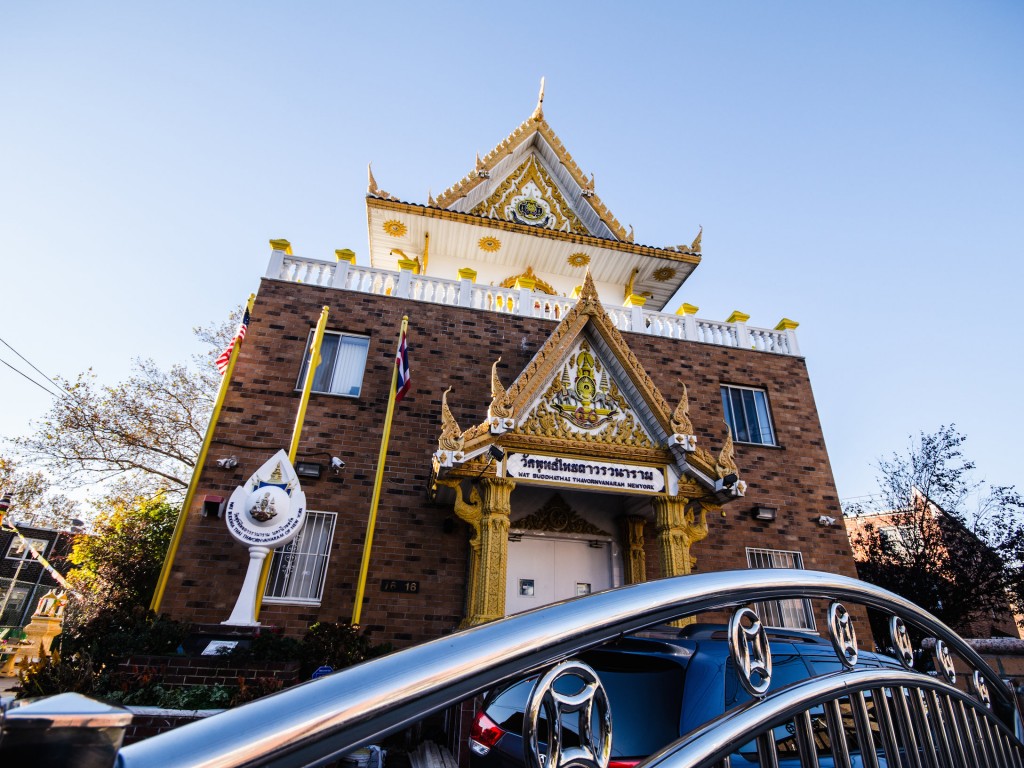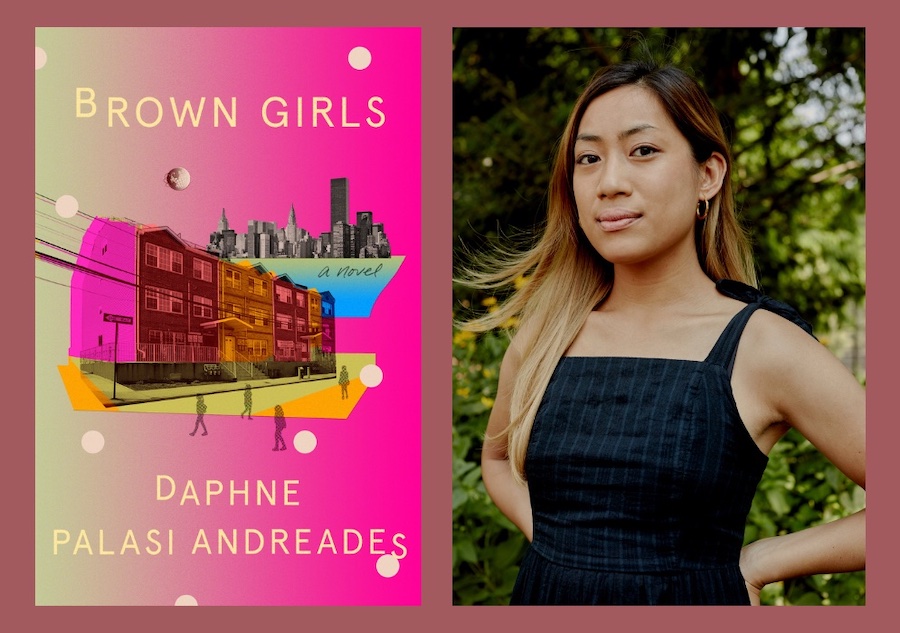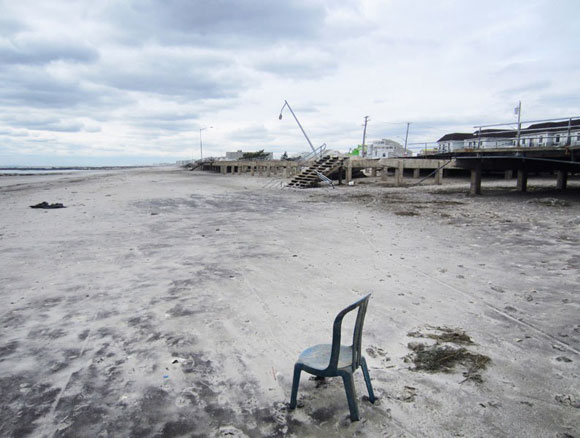A quest for Armenian coffee in the inauguration’s aftermath led one writer to ask, how much of ourselves do we need to let go in order to see ourselves in others?

November 17, 2017
In June, days after the Supreme Court lifted legal blocks on President Trump’s Muslim Ban save those with “bona fide relationships” to the United States, we asked writers to imagine creative openings and counter narratives as to what a bona fide relationship might be. Trump’s latest iteration of the travel ban was stopped by two federal judges last month. We are publishing a series of stories and poems on The Margins that create new narratives and futures in response to the Muslim Ban. The following essay is the final installment in our series. Read more and follow along here.
On January 25, 2017, I found myself running an errand in Sunnyside, Queens within the vicinity of the Armenian coffee store, so I decided to get some Armenian coffee. I call it the Armenian coffee store because there is a big Armenian flag of red, blue, and apricot-colored horizontal stripes on the storefront, and it has been owned by Armenians for 50 years according to a sign in the window offering congratulations on their golden anniversary, the words in fancy script superimposed over another Armenian flag. The coffee is roasted in a huge copper roaster that looks like a gramophone, the horn amplifying the coffee aroma, and the beans are ground specially for each customer behind the counter. Still grieving five days after the inauguration, I went in, smelled the freshly roasted beans, felt like I had climbed inside a cloud of ancient comfort, and said, “I’ll have half a pound of Armenian coffee.”
The girl behind the counter asked, “What do you mean by Armenian coffee?”
It was difficult to discern from her expression if she was challenging me or playing dumb. Was I on Armenian candid camera? I took in her curly brown hair and ivory face as if it were another century and we had just crossed paths on a lonely road and I needed to assess what tribe she was from. “You know, Armenian coffee,” I said.
She replied, “There’s Turkish coffee and Arabic coffee, too. I’ll know what kind of coffee you want if you tell me how you prepare it. It depends on whether you make it drip or filtered or—”
“I make it in the jazzve,” I interrupted, and I mimed holding my tiny copper pot over the flame of my gas stove.
This must have been the key: “Oh, you want the powder,” she confirmed. Then she ground the coffee and sold it to me. As I was walking towards the door, another woman came in and she asked for Armenian coffee, too.
“What do you mean by Armenian coffee?” the counter girl asked and I turned around to recognize what must have been the exact same countenance of “what the fuck?” on the woman’s face that had just been on mine.
Because everyone goes to the Armenian coffee store to get, guess what, Armenian coffee. I know it’s the same as Turkish and Arabic and Greek coffee. I don’t mind calling it those names in different places. And if I were at the United Nations, a good solution would be to call it powder. But in the Armenian coffee store, you call it Armenian coffee. This is not a rule that I invented. This is a dictum established by the parameters of the Armenian coffee store: to not call it Armenian coffee at the Armenian coffee store would be an insult to the proprietor. At least this is what I have intuited from patronizing the Armenian coffee store a few times a year for the past several years. A visit is a special occasion for me. I suppose that I have come to enjoy upholding its abiding tenets. On my way there I even imagined asking for the coffee in Armenian: haygagan sourj. Would I be able to do it without looking stupid? Or would I be inviting questions in Armenian that I likely can’t answer? The Armenian coffee store is called Baruir’s. I have trouble wrapping my mouth around the diphthong sandwiched between the two rolled r’s, which is the other reason that I call it the Armenian coffee store.
What I am trying to say is that I often anticipate that I won’t be Armenian enough when I visit the Armenian coffee store. So I was not expecting that by asking for Armenian coffee, I’d be accused of being an Armenian nationalist zealot.
After all, I have seen nationalist zealots in action. I once went to a Lebanese restaurant with a friend, and he insisted to the waiter that what he was ordering was Armenian coffee. “So you’ll have the Arabic coffee?”
“No, I’ll have the ARMENIAN coffee.”
“Uh, we have Arabic coffee.”
“You mean ARMENIAN coffee?”
I was so embarrassed. My friend was making a political point in a restaurant. And with the Lebanese, our friends. I could kind of understand if we’d been in a Turkish place.
Coffee that has been finely ground and brought to near boiling over a flame in a tiny pot with a long handle has been traced back to Yemen. Though Turkish coffee is its most widely recognized name, it is also called Greek coffee, Arabic coffee, Bosnian coffee, and so on, depending on who is making it and on historical rifts between empires and nations.
My friend grew up in L.A. singing patriotic Armenian songs and was taught that Armenians were superior to all other races. In other words, he learned the lessons of a nationalistic organization. Unlike my friend, I grew up in a Boston suburb straddling the Armenian community and the whiteness of America. As my family assimilated, I learned to be ashamed of my Armenianness.
In an effort to see the world more clearly, my friend has been trying to undo what he has learned, and I’ve been trying to undo what I have learned. In between our experiences, there is coffee. There is powder.
But something about the word powder is so insulting. Powder is crushed. Disintegrated. It’s like power with a “d” in the middle of it. Power that has been powdered down, destroyed.
I walked to the subway entrance in Sunnyside, climbed the stairs to the elevated 7, and took the train home as it floated over blocks of boulevards in Queens, traveling over my favorite Filipino, Colombian, and Tibetan restaurants. Standing among commuters mostly hailing from Asia and South America, I was conscious that the powerful smell of my coffee was wafting into the crowded car.
I tried to make sense of what had just happened: when the girl in the Armenian coffee store didn’t know what Armenian coffee was, I think I found it mind boggling partially because I had recently visited Glendale, a sizable Armenian neighborhood in Los Angeles. When I went to a Glendale bakery I found Armenian coffee on their menu, the words also written on a round paper plate and pinned to the wall like an emblem. Instead of serving it in the usual ceramic demitasse cup, it came in Styrofoam and was far more coffee than I usually drink, except when I go to the Romanian restaurant in Sunnyside, around the block from the Armenian coffee store, where they serve it in a big cup and saucer. In a place like Glendale, with an estimated population of between 50,000 and 80,000 Armenians (or between 1/3 and 1/4 of the entire population of the city), it’s more ordinary, I imagine, to just be Armenian, to not have to always unearth it or examine it or cherish it. Here in New York, where the once solid Armenian neighborhoods have dispersed through assimilation into small enclaves sprinkled between the far reaches of Queens, Brooklyn, and Bergen county, among so many people from all over the world, I am constantly learning about other cultures and the ways that we overlap. But I often find myself maneuvering around pockets where my Armenianness is hidden and unknown. Going to the Armenian coffee store makes me feel Armenian in a quotidian way, but it also underlines a part of myself in one of the only places in this city where my ethnicity is celebrated.
The Armenian coffee store is paneled in wood, lending it an old-timey, pseudo-Soviet look. The owner, Baruir Nercessian, arrived to Sunnyside in 1966 from Romania. He was born in 1904 and thought he lost his entire family during the genocide of 1915, believing himself to be an orphan before he was miraculously reunited with his father nine years later. His story reminds me of the ones my paternal grandmother told me of losing her siblings and parents as a ten-year old child during the genocide, then surviving a death march to Syria where an Arab family took her in before she wound up in an orphanage, eventually discovered by a brother who brought her to America in 1920. My other grandparents and great-grandparents escaped oppression in the Ottoman Empire, fleeing directly to the U.S. from 1891 to 1914, but Baruir’s family and mine all originate from the same place, the Armenian plateau. The items on the scant shelves of Baruir’s are familiar to me and I buy them on holidays when I want to make special dishes: wheat berries that I boil with dried fruit to make a Christmas pudding; round black young walnuts preserved in a shiny syrup that I once enjoyed sitting at a cafe nearby Garni, Armenia’s only remaining pre-Christian temple.
So when the girl at the Armenian coffee store questioned me, it felt like my homeland-as-storefront had irrevocably changed. I was unrecognizable. Was I no longer welcome? This incident happened at a time when an executive order was being drafted to bar Muslims from entering the United States. Armenians were among the visa holders from Iraq, Syria and Iran who were harmed by those orders, detained and deported from airports. In contrast, Armenians have been granted safe haven in Iraq, Syria, Iran, and elsewhere in the Middle East and North Africa for over a hundred years after they fled genocide as a Christian minority. Armenian Americans voted for Trump – there’s no way to know how many as no one does polls of these things, but there is a sizable “Armenians for Trump” Facebook page of 3,000 members (compared to much smaller groups that number in the hundreds for Bernie and Hillary) —Armenian American lobbying organizations were slow to speak out against him and even sought to get genocide recognition from him. The day before I bought my coffee, I found myself arguing with Armenian strangers on Facebook that such recognition was worthless from someone causing irreparable harm to women, people of color, immigrants, Jews, disabled people, queer people, the environment: pretty much everyone and everything.
In asking for coffee as Armenian, did it seem to the girl behind the counter that I was erasing other cultures who have their own vital experiences with making and drinking it? Was my request another way of saying “Armenia first, Armenia first”?
I wonder: How much of ourselves do we need to let go in order to see ourselves in others? To see others in ourselves?
I should mention that I never drank coffee until recently. I never liked how it tasted nor how it made me feel: I am nervous enough without help from a stimulant. No one in my family ever drank Armenian coffee, only American coffee made in a Mr. Coffee, or, on special occasions, from a stainless steel percolator with a glass knob on the top that plugged into the wall and sat gurgling on the counter after big family dinners. When I went to live in Armenia ten years ago, however, in an effort to re-constitute what culture had been leached from me through assimilation, I became intrigued with the practice of Armenians drinking coffee: it was a custom, a ritual. The coffee wasn’t just about a caffeine fix to get through the day or to cap the end of a big holiday meal. It was a small treat to experience with friends, something to gossip by, to share hospitality—whatever fruit was lying around, whatever wrapped chocolates someone had picked up from the corner store. If you had more time, you could turn over your small cup in its saucer and wait for the grounds to drip down the sides, then turn it back over and have your fortune read. Still, I didn’t drink it; I just always preferred herbal tea.
At some point after I returned, my friend, the late Neery Melkonian, an Armenian woman born and raised in Syria before escaping to Lebanon and then again to the U.S., asked me to pick up some Najjar, a Lebanese brand of coffee sometimes blended with cardamom. She made it for me when I visited her on the Lower East Side: we would talk about art and life in her beautiful little apartment with paintings on the walls. An avant-garde art curator and critic, she was always trying to get me to stop writing about the genocide, to think about life, to celebrate ourselves, and sometimes she succeeded. A non-Armenian husband of an Armenian friend was actually the one who showed me how to make coffee. He explained how you measure the water from the cup you are using and pour it into the jazzve, followed by a teaspoon of coffee for each cup, followed by however much sugar you want. Then you bring it to a near boil, till small bubbles cling to the side of the jazzve, take it off the flame, and bring it to a near boil two more times to create a little foam to float on the surface of the coffee in the cup.
Now Armenian coffee is the only coffee I know how to make. In its nutty, bitter taste I feel warm and loved, and its deep brown, nearly black color renders it as precious as mahogany, especially when I sip from one of Neery’s cups. Recently, I revived it in my family. From the depths of her kitchen cabinet, my aunt pulled out the jazzve, a brass version from her parents, and my father tracked down the cylindrical grinder from the Old Country, recalling how his mother would instruct him to wind the lever on top to break down the beans into sand whenever family friends named Missag and Djenev dropped by. In the cabinet in the dining room of my parents home I pulled out the tiny, delicate porcelain coffee cups that my mother inherited from her grandparents, painted in shimmering silver and decorated with flowers and birds, made in Japan. They likely hadn’t been used since my great grandparents died in the 1950s. Friends from the neighborhood would stop in and my great grandmother would offer them coffee—no one was too busy not to sip and gossip. As we drank, Mom remembered that when her grandmother served coffee, she would say, “Batmeh,”—tell me, what’s going on? It’s easy to understand why: that little bit of sweet and pungent warming the mouth, throat, and heart, compels you to bubble over, just before boiling, to connect with others.
When the girl at Baruir’s took the job, she probably wasn’t told that she was going to be a purveyor of culture. That her act of grinding coffee to customers’ preferences, and naming it according to their specifications, would tap into a history of loss and reclamation. Her manner was not rude; she spoke in the exact same even tone with me as she did with the next customer. Her disposition was somewhere between a therapist simply posing a question and a lawyer crafting an executive order.
I’ll never know her intentions, cruel or just confrontational, provoking or gently prodding, undermining or simply unaware: when I went back to the store a few weeks later, she wasn’t there. Out of curiosity, I asked an older woman behind the counter if my asking for Armenian coffee made sense. “Yes. Armenian coffee, Turkish coffee, Greek coffee, Romanian coffee, some people even call it Yugoslavian coffee—it’s all the same. We know our customers; we know what they mean.”
So much for my belief that I’d been upholding the rules of the Armenian coffee store. It made sense that the folks at Baruir’s had been adapting themselves to their customers in this diverse neck of Queens. It was a reminder that Baruir’s wasn’t just a haven for me, or Armenians, or Armenian-Romanians. Likewise, Armenian Americans haven’t just advocated for themselves, from Charles Garry, the lawyer who defended the Black Panther party, to today’s Hye-Phen collective of queer, trans* and radical Armenians, who write and organize in support of Black Lives Matter and against Islamophobia. No matter how weak or unseen we perceive ourselves to be, finding common cause in the pain of others will always be our strength.
This is a particularly important lesson to remember now as Americans are closing their doors to immigrants from six Muslim-majority countries and to all refugees everywhere. Trump’s “watered down” executive order made it to the Supreme Court, whose justices denied that it was a Muslim ban thinly disguised as a measure to protect Americans from terrorists. As a compromise, only those with a bona fide relationship with us are allowed to come in. As we ask ourselves what this vague term really means, I have been reflecting on how my great-uncle who found my grandmother in an orphanage in Syria and brought her to the U.S. wasn’t her “blood brother.” His parents had died when he was an infant; my great-grandmother had just given birth (to my grandmother’s older brother), so she nursed this newly orphaned baby in her village as well as her own. Such an “undocumented” relationship likely wouldn’t pass muster with the State Department now, but because of his bravery in surviving a forced labor detail during the genocide, and a love for his adopted family that compelled him to journey for miles in search of my grandmother, Touros Kashgarian is one reason that I am an American today.
Perhaps the issue isn’t that we let go of ourselves enough so that we can see ourselves in others, but that we hold onto ourselves enough so that others might see themselves in us. When I took that bag of coffee from the girl, five days after history caved in on itself, I breathed in the smell of ancient comfort, and nothing could stop me from smiling.
The Bona Fide Relationships Portfolio was published with support from the David Rockefeller Fund and the Hemispheric Institute of Performance and Politics.



